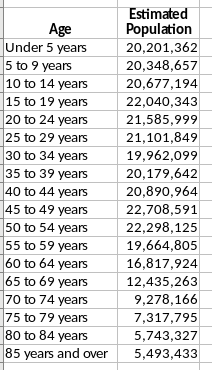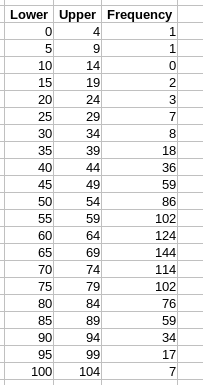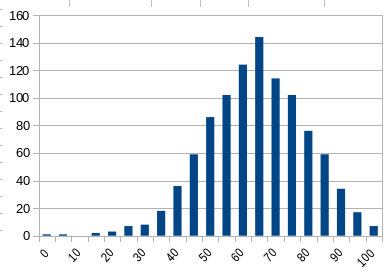The Normal Curve
- Think about different types of histograms we might get from different types of data
- The Uniform Distribution.
-

-
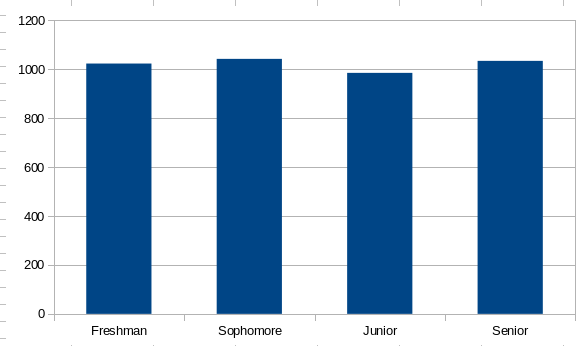
- All of the classes tend to have the same count.
- This is true when the population is very uniform
- J shaped distribution
- I found this article on hours spent studying per week in 2011.
-
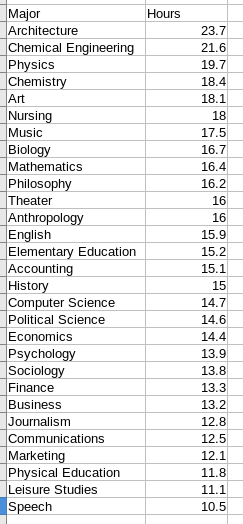
-
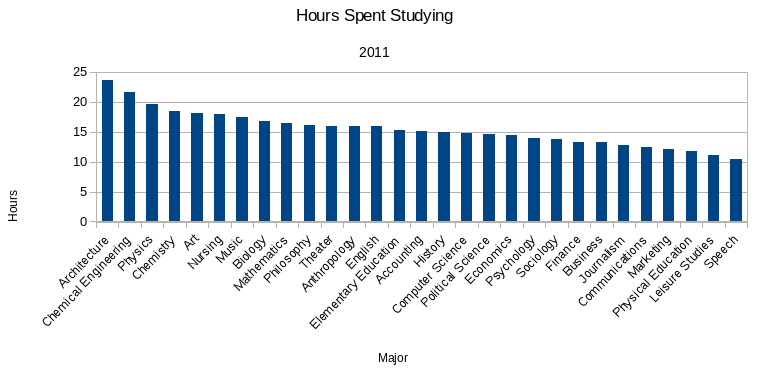
- This happens with things like studying where people get to choose how much time to invest in something.
- Bi-modal
- Normally distributed data
- There are many cases where data fits
- As we add more categories, these graphs tend to become more smooth and we usually represent them as lines, not columns.
- Draw each.
- The normal distribution is interesting
- Called the Gaussian Distribution because it was studied by may 8th great ancestor Carl Friedrich Gauss
-

- The graph is called the bell curve
- The mean median and mode are all the same in the normal distribution.
- The data is symmetrically distributed about the mean.
- There are many things that occur naturally in the world that are normally distributed or approximately normally distributed.
- Size things like height and weight.
- Other natural abilities like IQ (cringe)
- Duration things like the life of a set of tires.
- It is so frequent that we will study this distribution.
- The Empirical Rule states
- About 68% of the population lies within one standard deviation of the mean.
- About 95% of the population lies within two standard deviations of the mean.
- About 99.7% of the population lies within three standard deviations of the mean.
- Given the mean (μ) and standard deviation (σ) of a population that is normally distributed, we can decide what percent of the population has a given value.
- To do this
- We compute something called the z-score
- Based on the z-score we can find the percent of the population to the left of the z-score based on the Areas of a Standard Normal Distribution table.
- Finally we will do some geometric reasoning we will be able to describe other facts about the data.
- z-score
- For a given piece of data x, $z_x=\frac{x-\mu}{\sigma}$
- Do problems Page 779 on




